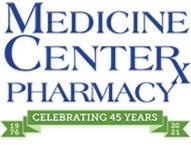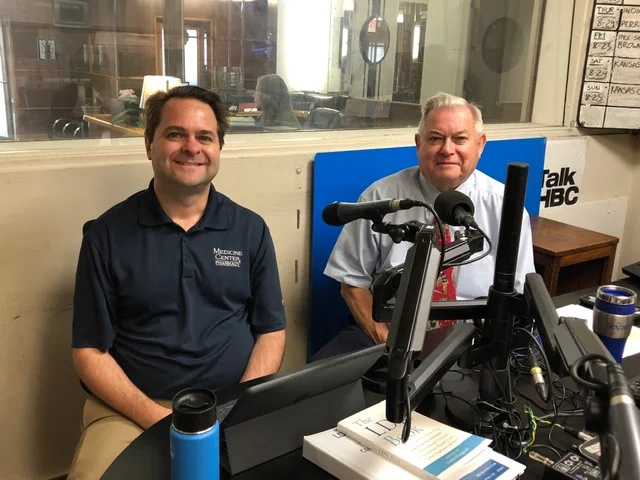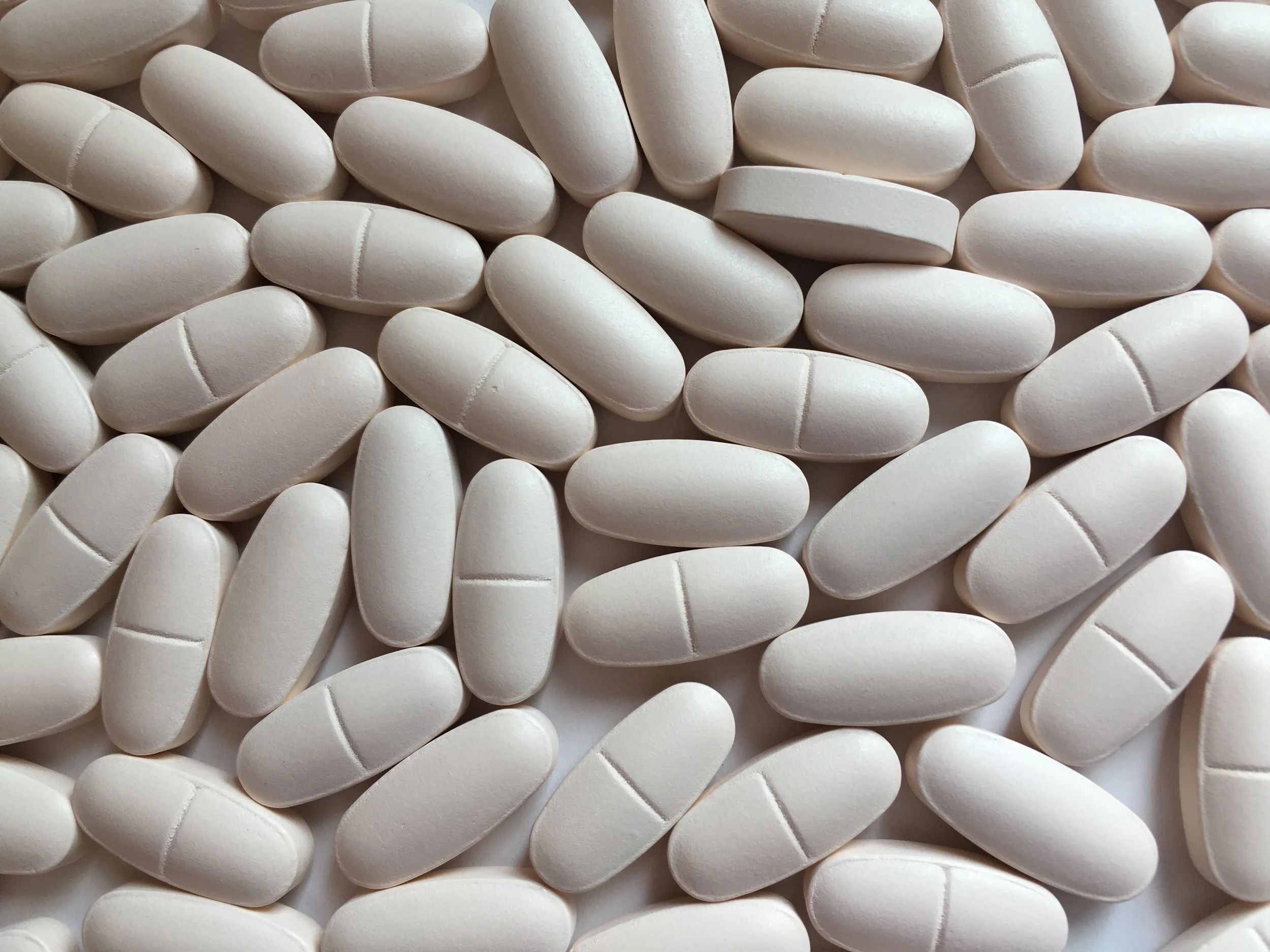The human brain grows and develops at its greatest rate at the beginning of life, which is why ensuring proper nutrition is key. However, it can be challenging for growing children and adolescents to meet their nutrient needs. The truth is, lack of nutrition during the developing stages of life can have profound effects on growth and the structural development of the brain.
DHA, one type of omega-3 fatty acid, is necessary for healthy brain function as it is a principal structural component for proper brain function and development.
This essential fatty acid is found at high levels in a limited number of foods such as fatty fish and marine algae, which many children do not regularly consume. Supplementing with an omega-3 fatty acid that is DHA dominant can ensure children are getting the necessary fats they need for healthy brains.
Health Matters is a weekly radio show sponsored by the Medicine Center Pharmacy on WHBC 1480 AM in Canton, Ohio. This episode pharmacists Brad White and Paul White discuss Omega 3 supplementation and Brain Health with Bryce Wylde, functional medicine expert.
Introduction
The brain is made up of specialized cells called neurons. You've got 86 billion of them. They work together to process and transmit electrical and chemical messages that enable you to function. Their magic lies in their ability to help connect each other to form neural networks; just like people do to form social networks. If you'd like to, please subscribe to our podcast; you can search for Health Matters with the Medicine Center in your favorite podcast app and take our show with us wherever you go each week. If you have questions you'd like to post up today, post them up to our live Facebook feed. [00:55].
Below are experts from this podcast episode:
Bryce Wylde is an alternative medicine expert, clinician, television host, educator, author and philanthropist.
Dietary Sources of Omega 3 Fatty Acids
So, first of all, if you'll let me indulge the backdrop, people are really confused, I believe, about even what Omega 3’s are? Where they come from? It's well talked about, it's one of the most researched evidence-based ingredients; actually, second only to aspirin. In the world, over 21,000 human clinical trials and publications have been made for Omega 3’s, but as it released the supplements market -- First of all, there's all types of sources in our diet. So, this is the stuff that can come from:
Nuts
Seeds
Plants, like Echium and Ecchi flower; those are actual ingredients and supplements on the market as well
Seaweed
Algae, we use that at Brain Armor
Algo, and we'll perhaps talk about all the reasons why we source vegan
Fish, of course, is some of the highest levels
Grass fed beef
But, by and large, when people think Omega3’s, they think about fish boil. But, in this day and age, the bottom line with our SAD diet (Standard American Diet). We simply aren't achieving a high enough amount of these Omega 3’s. So, there's all sorts of Omega 3’s available in the supplement market, which include:
Flax
Fish
There's a lot of vegan sources
Algal sources
There's even plant and seed sources called Echium and Ecchi flower; that sounds like sushi, it’s not. Ecchi flower is simply a weed, Boraginaceae is the Latin name.
So, you can get Omega 3’s from all kinds of sources; however, and this is something I hope it will clarify today, there's really only one best source, and that is, in fact, as it turns out: Algal. It's very, very sustainable and it's very, very useful for the body in the format that it's already in as it pertains to the most bioavailable or readily available to the body. [04:34]
Functions of Omega 3 in Maintaining Health
So, Omega 3’s are, otherwise, also considered essential fatty acids. That's because specifically they are essential to get from our diet, our body can't make it on its own. So, it turns out that, based in genetics, some of us are actually better than others, but at the end of the day we don't really make enough of a particular essential fatty acid known as DHA as well as EPA by simply consuming what we get in our diet. In fact, consuming more Omega 3 had a huge consequence in the evolution of the size and the function of our brain. This is only about 50,000 years ago where we actually began to cook to use fire, allowing us to digest outside of our body and allowing us to do a lot more than just forage all day, hours of the day. So, growing this bigger brain was actually less of a liability, but simultaneously, this is where it's really interesting. There's a mutation in a gene called FADS2, and this gene encodes for a really crucial enzyme that's necessary to convert Omega 3’s in the body. This enzyme is called Alpha60 saturates. It's critical for brain function. However, it still doesn't do a good enough job on its own drawing from nuts and seeds. We really have to eat quite a lot of fish to get the optimal levels of these Omega 3 essential fatty acids. In this day and age, again, that SAD diet that we're consuming, we are way over consuming grain, and proinflammatory foods, refined carbohydrates, and we refer to this as the starch and the sugars, cakes, cookies, muffins, overconsumption of bread etc. That's shoving us over toward an Omega6 saturation in our systems, and that's actually proinflammatory, where the Omega 3s EPA and DHA are anti-inflammatory. So, our body doesn't make omega threes effectively. However, about 50,000 years ago, we did have this gene mutation in our population which allowed us to do a little bit better a job, and in this day and age, we kind of reverted back to a situation where we, not only don't get enough in our diet, but we over consume something competitive to the benefit of Omega 3, and that's the Omega6. So, actually, historically, evolutionarily we used to be more of a 1:1 ratio of Omega 3 to Omega 6, and this day, we're 26:1 Omega 6 to Omega 3, pushing ourselves into, what we affectionately refer to as proinflammatory. Inflammation is a medical buzz term of the day for a good reason, it really is what causes at the molecular level all disease is inflammation. [06:38]
Types of Omega 3 Fatty Acids
The we really should pay attention to are about four. It's a biochemical cascade essentially stepwise in all the cells of our body that we take an Omega 3 called ALA (Alpha Linoleic Acid). ALA, then in the body turns into SDA (Stearidonic Acid), and then that turns into EPA, and then eventually EPA turns into DHA. Once again, though the body doesn't do a great job, it does a little bit of this converting, women actually do a little bit better than us for that matter, but ALA into SDA into EPA to DHA. Those are four essential omega three fatty acids. DHA, ultimately think of that as brain juice, that is the most important brain Omega 3 essential fatty acid. [09:54]
DHA, Brain Juice, and it’s importance
So, DHA downstream, it’s just alluded to the furthest downstream, the closest axonal gases. This is the most important brain nutrients scientists have discovered, literally. It fuels the cells, so, think of the cells of our body, red blood cells are the most sort of commonly thought of illustrations we've gotten our head, as the cylindrical sort of half circular cells with a membrane around them to keep inside things like iron, oxygen carrying capacity, hemoglobin, etc. So, all the cells of your body, whether it's a red blood cells, skin cells, or even a neuron in the brain have a membrane, and that membrane is there purposely to allow things in and outside of the cell. The membrane is made up of fats, phospholipids, they're called, and they've got a hydrophilic and hydrophobic and one side doesn't like water, one side likes water, and that's how the cell ultimately keeps integrity. Ourselves really require a high percentage and particular neurons, brain active thinking cells require quite a high percentage of DHA and Omega 3 fatty acid as well as EPA known to sort of quell and manage inflammation, but DHA and that integrity, high percentage of DHA in the brain, we refer to it effectively as “brain juice”, is going to allow neurons to connect and communicate with each other better. We're fatheads, our brains are made of 60% or more fat and the most important fat is that DHA. [15:37]
Brain Armor and Algae Based Omega 3
So, the differentiator is that most importantly work derived from algae, not fish or algal oil. Here's the key to understand: fish do not enhance EPA and DHA, they ingest this from algae to begin with. So, what they do is bioaccumulate it, so this is part of their food chain. They consume the algae and then they saturate their bodies, their meat, with EPA and DHA, and what we know is to get the purest, the most potent form of EPA and DHA, we can actually simply go straight to the source by bypassing further processing that fish undergo. We can acquire these healthy fatty acids from the same natural route that fish do, right from algae and processes in very controlled environments. When it comes to fish, we're a little concerned this day and age with bioaccumulation of other things like dioxins, and heavy metals, these are all quite toxic. So, that requires a purification process when it comes to fish before their oils can be sold. Often, this process involves so much converting and reconverting of their oils that we're concerned about things like rancidity, not even to mention sustainability. So, here's the other important thing is that during the fermentation process that our product goes our algae, algal cells are only fed pure nutrients of certified quality. So, our Omega3’s come from these microalgae fermenters, imagine these massive fermenters that look like what you find in the beer industry, and they rely on this pure, these natural ingredients, so that the finished product is 100% free of toxins, unlike the fish oil industry. All components that we're using, this is in the mix, it's very simple, they need a little bit of energy, a little bit of food, and some care and they just blast out all kinds of DHA and EPA. We know that basically everything that goes into the algae, so that we can be very confident about everything that comes out. So, essentially, brain armor is all of that it's pure, it's sustainable, because that's important, we have to consider sustainability we're not raking the ocean floor for these algae because that's also an unsustainable process. Vegan and keto friendly at the same time. It's all GMP (Good Manufacturing Practices), credibly evidence-based ingredients. This is a DSM ingredient with many, many hundreds of human clinical trials, and then we have a very clean label. So, another differentiator is there's no sugar, obviously no gluten, artificial flavors, artificial sweeteners, very clean label. So, that would be ultimately how we differ. We're also NSF and NSF certification in particular for sport is very important because this means that it's actually safe for athletes who are constantly tested for any impurities or sport enhancers, they can feel comfortable taking this product as well. [17:31]
Benefits of EPA DHA Supplementation
I think what we have to do is, first visit what is cognitive ability and certainly it's not just your IQ ranking, or your recall ability, for that matter I’ve recently in been interviewing, what are known as memory champions, memory athletes didn't even know until recently these guys existed, but they have legitimate games in which they are challenging their brains on a regular basis and train their brains, for that matter, to become the best at recall, but it's simply not cognitive abilities, not just recall, it's not just IQ. It's a whole bunch of other things. So, what is it? And what do we do to improve it? So, first of all, neurogenesis. Neurogenesis is the generation of new neurons in various brain regions. Neuroplasticity is our ability to have a plastic or malleable brain and that is to say, nerve connections are constantly being made and they're constantly being paired back, learning things, unlearning things, and then to increase neurotrophins; these are a type of hormone found in our brain that increases neurogenesis and neuroplasticity. So, ultimately, what we want with a healthy diet and lifestyle is we want to boost all of these factors and the good news is that we can. So, I'm always telling things like consuming more healthy spices, mustard, for example, a teaspoon of that every day, curcumin, these have ingredients in them that boost neurotrophic activity. Lots of green tea, I'm drinking some right now, with EGCG, very potent antioxidants. We know about cardiovascular exercise, we're meant as humans to push, pull, jump, squat, lift. These are things we don't do enough of, that’s one of those important things to boost brain activity and cognitive ability. I'm a huge advocate of taking contrast showers that's turning the dial really hot, almost to feverish point; you don't want to burn yourself, of course. And then spend a minute on the opposite end of the dial, freezing cold. You do that back and forth for a bit that's actually going to boost these neurotrophins, which is going to boost neurogenesis and boost neuroplasticity. So, all kinds of things, we talk about sleep hygiene; keeping a really dark cool room, turns out that that is key for glymphatic. So, we know about lymphatics; draining toxins out of our system in the periphery, but there's no lymph in your brain. They're called glimp or glial cells; these are the non-thinking neurons that help to clean up the mess. They only really work at night, in deep sleep, when it's cool and dark, and getting that, not just ours clock on the pillow, but deep restful sleep. [31:49]
But, probably the most important thing, is when we come full circle, is supplementing with DHA and EPA. So, DHA has been known to boost certain neurotrophins, to boost neuroplasticity, and to boost neurogenesis. So, all of these things, probably most importantly, something so easy everyone can do, to supplement with Brain Armor is going to affect, and in a positive way, cognitive ability. [34:53]
The Living Brain Project
Thelivingbrainproject.com is where you can learn about case studies done by Brain Armor with a variety of participants. Participants that supplemented their diet with Brain Armor EPA:DHA formula at the recommended dose for 90 days saw the following results:
Every patient demonstrated an increase in the Omega 3 Index (O3i)
Baseline Omega6:Omega3 ratio was reduced from 7.35:1 to 4.5:1 (close to an ideal range of 3:1)
AA:EPA Inflammatory Marker ratio reduced by 51%
You can get your Omega 3 Index (O3i) tested at the Medicine Center Pharmacy. Check out our Events page for the next in pharmacy health screening event.
What is BDNF?
So, I sort of spoke briefly about neurogenesis, neuroplasticity and the neurotrophins, NFL (NeuroFilament Light). BDNF is probably the most important neurotrophins to know about Brain Derived Neurotrophic Factor. So, it's an acronym that stands for the production of that particular neural hormone. And it's responsible essentially, for new nerve growth and nerve connectivity. So, it's responsible, essentially for neurogenesis and neuroplasticity. In fact, there's also a gene called BDNF, and that's responsible for how well each of us individually do this. Good news is regardless as to the variation genetically that you might have, a brain derived neurotrophic factor, we can improve it, we can boost it, and DHA is one of those things. [39:40]
Can we grow new nerve cells?
So, the best information that came down the pipe in the last less than a decade, in fact, it's really only been the last few years neuroscientists have realized that we can grow new neurons and new nerve cells. We don't do that in an astronomical number. You mentioned in the top, in the intro, we've got 86 billion neurons, we're only doing a few thousand more a day. So, and that's only if you're treating your brain right by taking things like brain armor and engaging a healthy diet and exercise. But, the fact of the matter is certain regions in our brain and particularly hippocampus, where we form memories and consolidate memories at night when we sleep well, in other parts of our brain, we can grow new neurons and new nerve cells when we treat our brain well, that's the bottom line. [44:49]
How to Treat the Brain Well?
Anything you can do to boost that neurogenesis, neuroplasticity, BDNF, taking saunas every day, engaging in high intensity exercises like hit, training, cardiovascular exercise, improving social networks, drinking green tea. Thinking about ingredients like curcumin from turmeric, more spices in your diet, and of course, taking brain armor, literally consuming that daily is improving your brain health and growing new nerve cells. [45:46]
The Medicine Center Pharmacy is your local resource for Brain Armor Omega 3 Supplements.
If you commit to improving your brain health & performance we are committed to you.
That's why we created a 40-day Test Pack including Brain Armor Brain Nutrient Formula and 2 Omega-3 Index Testing Kits. Baseline your current Omega-3 Index, Omega-6 to Omega-3 ratio and your AA:EPA inflammatory markers on day 1 and then re-test after supplementing with Brain Armor for 40 days. You will see the difference and feel the difference. Clinician Reference Sheet
ACTIVE INGREDIENTS (per serving - 10 mL):
TOTAL OMEGA-3s - 2,292 mg
DHA : EPA - 1,250 : 625 mg
VITAMIN D3 - 1,800 IU
VITAMIN E - 45 IU
Medium Chain Triglycerides - 4,500 mg
Below is a sample of NFL Pro Football and Brain Armor case studies.
You can find additional case studies here.








































Autoimmune diseases are a complex group of conditions in which the immune system mistakenly attacks healthy cells and tissues. While treatment options exist to manage symptoms, there is no known cure for autoimmune diseases. However, recent research has shed light on the potential benefits of Low Dose Naltrexone (LDN) in managing these conditions. In this blog post, we'll explore some of the latest research findings on the use of LDN in autoimmune diseases.